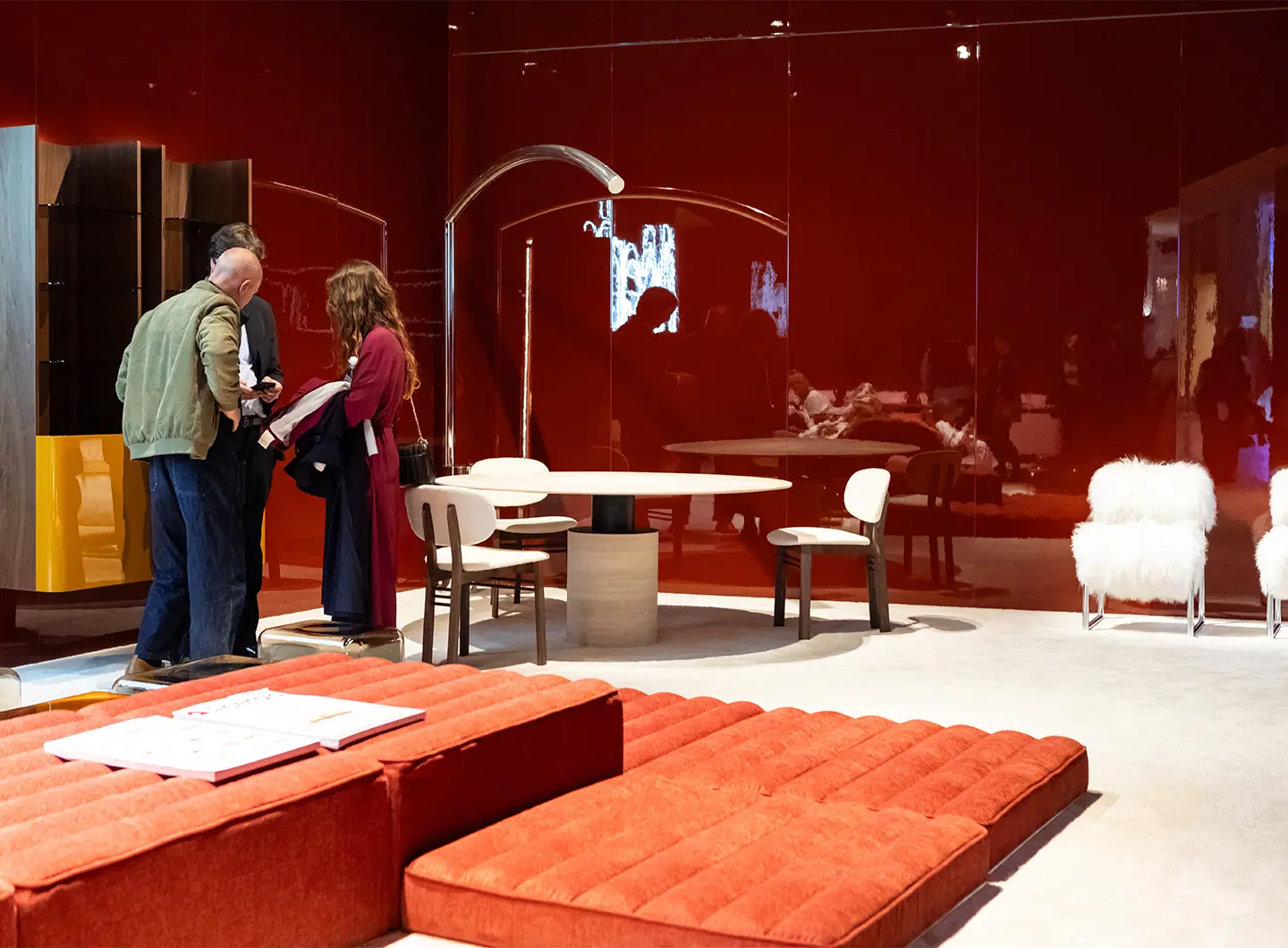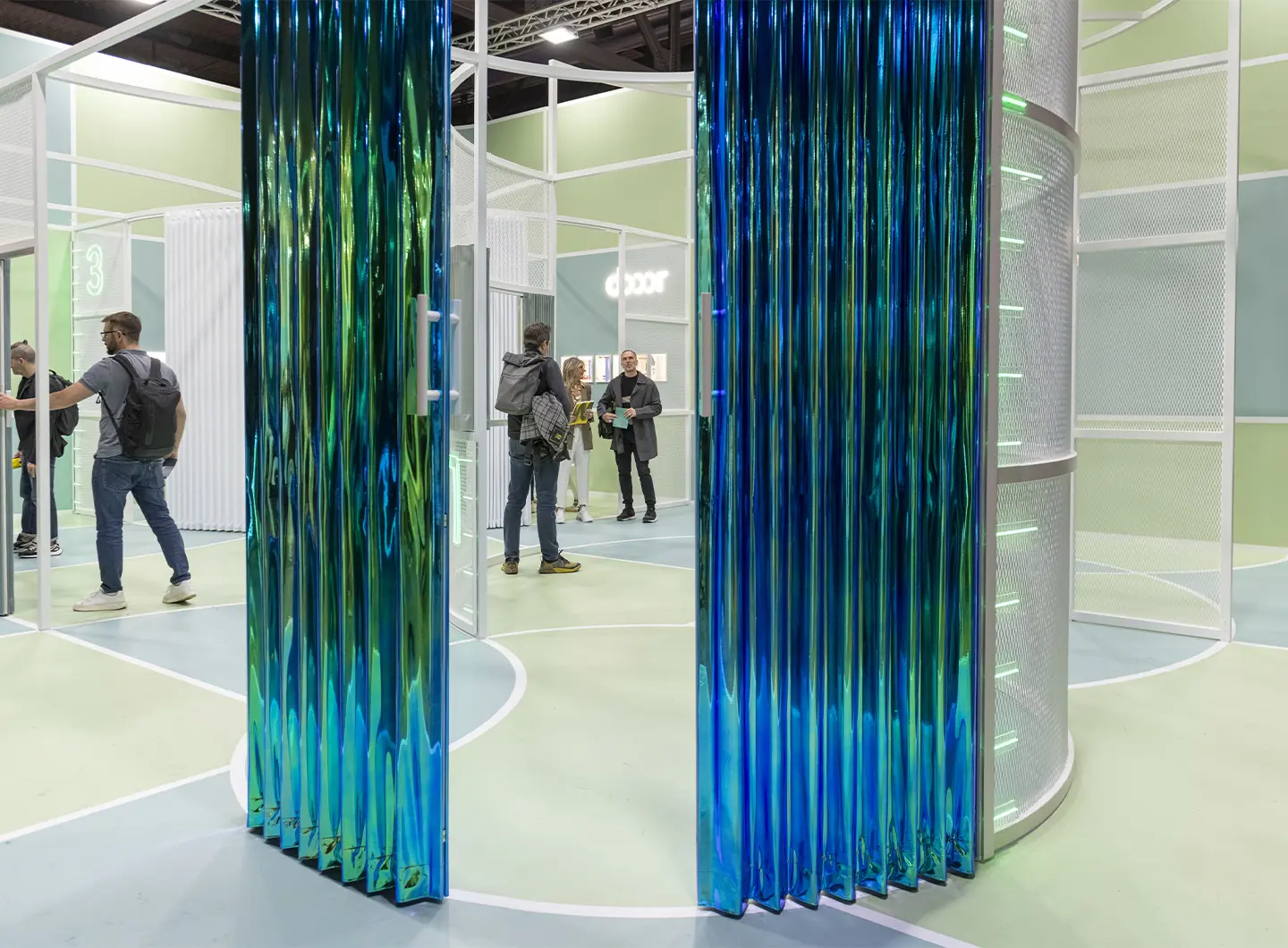In partnership with MiCodmc, a selection of establishments ripe for discovery during the 63rd edition of the Salone del Mobile.Milano, from 8th to 13th April
Relive the atmosphere on the stands at the Salone del Mobile.Milano 2024

Gufram - Ph. Andrea Mariani
Architecture, neon and circularity. A rundown of the installations that gave shape to the latest edition of the event dedicated to the world’s leading furnishing and design segment
This year’s challenge at the Salone del Mobile.Milano was again to create the most circular installations possible, put together with techniques geared to facilitating disassembly, reusable materials and plants, almost omnipresent, designed to be returned to their original nurseries. While last year the spatial layout of the stands at Euroluce trialled a more open and organic footprint, this year - the year of EuroCucina, the International Bathroom Exhibition and the anniversary edition of SaloneSatellite – the flows were distributed along traditional corridors demarcated by the often-closed perimeters of the individual stands, which were largely accessed from one main entrance.
Aside from design from scratch, the recovery of installations from past editions is becoming more and more commonplace, testament to the companies’ desire to shift attention onto the issues of recycling and sustainability, including economic sustainability. Some companies chose not to build raised floors, as in the case of Very Simple: Kitchen, with a stand was by Davide Fabio Colaci Studio, which reused furnishing elements from the firm’s Bologna-based showroom.
Conspicuous among the names that shaped the geography of this Salone was the Milanese studio Calvi Brambilla, which was responsible for the Elica, QuadroDesign, and Dooor stands amongst others, in which the soul of the products on display were key to the conception of the space in which just a few elements, such as a coloured room, innocent pipes, plastic crates or a wall of stacked moving and backlit propellors, engendered an immersive and impeccably designed experience. (AB)Normal’s stand for Gufram was theatrical with industrial associations, in which a large staircase displaying iconic pieces by the Piedmontese company was framed by very tall, galvanised sheets projecting laterally to accommodate two rooms painted in red and pink.
Acerbis also opted for full colour immersion, with red lacquered walls and the name of the brand written in large letters in neon (a must at this Salone), to set the seal on its new collaboration with the designers Sabine Marcelis and Pietro Russo. Not just a desire to surprise with industrial materials and bright colours, but also a need for more contemplative spaces, as in the case of Globo with its stand designed by Studio Milo, immersed in an extremely light cream colour, referencing Japanese paper interiors with pale wood and lightweight plywood frames. 100% Japanese, while one of the most photographed installations at the Salone del Mobile.Milano 2024 was the installation designed by Taiju Yamashita, founder of DRAFT Inc., in which the space was filled with a dense three-dimensional grid of suspended glass spheres, making for different fractal effects according to the point of observation.
The softly-coloured membranes designed by DWA Design Studio for Pedrali gave visitors a sense of peace and suspension, perfect for retreating from the buzz of the fair. The stand by David Lopez Quincoces and Francesco Meda for Alias was more enigmatic, the patterns on the walls made up of vertical rectangular geometries hiding small LED strips in a Hitchcockian lighting effect potentially reminiscent of certain nocturnal film representations of the Empire State Building.
The open-plan stands, devoid of boundary walls, included those of Campeggi, the Como-based producer of convertible seating, Maruni, featuring furnishing by Naoto Fukusawa, Jasper Morrison and Cecilie Manz, Fogia, championing a minimal aesthetic with a large backlit partition wall and desaturated cream-coloured back walls and, lastly, Bitossi Ceramiche, which employed light wood panelling to showcase its new collection, made in collaboration with Objects of Common Interest, for a domestic feel.
Many of the companies recreated a homely feel on their stands: channelling the past, such as the Thirties-inspired installation by Vincent Van Duysen for Molteni&C; or the present, such as those of Porro, Glas Italia, Innova and Zanat, or deliberately halfway between new collaborations and historical re-editions, as in the case of Wittmann. On the other hand, the Minotti and Living Divani stands fuelled an atmosphere more reminiscent of the contract world and large showrooms.
Tacchini Italia Forniture instead went for a purely architectural vocabulary, entrusting Lorenzo Bini of studio Binocle with a space that was both domestic and monumental, featuring a series of rooms inspired by José Marques da Silva’s (1925-1944) Casa de Serralves. Last but not least, another historical reference, but Pop this time: the Hyper Poltronova installation devised by Donatello D’Angelo, art director of the Tuscan firm Poltronova, was inspired by the Invention of the Neutral Surface exhibition of 1973, in which radical groups took part.


 Exhibitions
Exhibitions



































